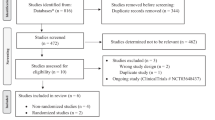Abstract
OBJECTIVE:
To assess the safety and efficacy of ibuprofen in reducing the incidence and severity of bronchopulmonary dysplasia (BPD) in preterm infants.
METHODS:
A total of 18 premature infants between 23 and 28 weeks’ gestation were studied. Ibuprofen (10 mg/kg of loading dose followed by 5 mg/kg every 12 hours) was administered intravenously or orally to nine infants on respiratory support at ≥7 days of age and was continued until 28 days of life or until the infants were spontaneously breathing room air, whichever occurred earlier. Ibuprofen levels in plasma were measured in five of these infants. The outcome variables (BPD, ventilatory parameters, and complications) in the study group were compared with those in nine matched controls treated conventionally.
RESULTS:
The incidence of BPD at 36 weeks postconceptional age was similar in both groups (eight of nine in each group). The percentage of oxygen requirement, the ventilatory efficiency index, and steroid use were also similar in both groups. One infant in the study group, who was also receiving steroids and aminophylline, developed gastrointestinal hemorrhage. Reversible renal failure in one infant and necrotizing enterocolitis in another infant were seen at 4 and 21 days, respectively, after the last dose of ibuprofen. There was no difference in the incidence of intraventricular hemorrhage between the two groups. Plasma levels of ibuprofen at 3 hours after the first dose ranged from 10.3 to 36 mg/liter. Study infants tolerated the feeds better and achieved the full enteral goal earlier than controls (p = 0.04).
CONCLUSION: Although a trend toward less ventilator and hospital days in the ibuprofen group was observed in this pilot study, the differences were not statis
tically significant. The incidence of BPD was similar in both groups. In the study group, two infants developed gastrointestinal complications and a third infant experienced reversible renal failure. The plasma ibuprofen levels were low. Further studies are needed to assess the use of ibuprofen for the prevention and/or treatment of BPD in preterm infants.
This is a preview of subscription content, access via your institution
Access options
Subscribe to this journal
Receive 12 print issues and online access
$259.00 per year
only $21.58 per issue
Buy this article
- Purchase on Springer Link
- Instant access to full article PDF
Prices may be subject to local taxes which are calculated during checkout
Similar content being viewed by others
Author information
Authors and Affiliations
Rights and permissions
About this article
Cite this article
Raju, N., Bharadwaj, R., Thomas, R. et al. Ibuprofen Use to Reduce the Incidence and Severity of Bronchopulmonary Dysplasia: A Pilot Study. J Perinatol 20, 13–16 (2000). https://doi.org/10.1038/sj.jp.7200296
Published:
Issue Date:
DOI: https://doi.org/10.1038/sj.jp.7200296
This article is cited by
-
Working Towards an Appropriate Use of Ibuprofen in Children: An Evidence-Based Appraisal
Drugs (2017)
-
Serum ibuprofen levels of extremely preterm infants treated prophylactically with oral ibuprofen to prevent patent ductus arteriosus
European Journal of Clinical Pharmacology (2013)



